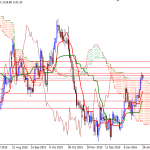
Bitcoin is hyperbolic again.
The premier cryptocurrency just cracked the $6,000 price level.
As I shared yesterday, we shouldn’t expect it to stop anytime soon, either.
I’m projecting that $6,000 is nothing more than a speed bump on the way to $10,000.
I hope by now you realize that we’re witnessing the biggest financial storyline of our lifetime.
The explosion of cryptocurrencies — led by Bitcoin — will be studied by scholars, economists, entrepreneurs and technologists for the next several hundred years. I know this, of course, because we still talk about Tulip Mania nearly 400 years later.
The latest Bitcoin news helps to crystallize its charm…
WikiLeaks founder Julian Assange is purported to have made upward of 50,000% on Bitcoin.
That is because the United States siphoned off Assange’s access to all traditional money channels. So Bitcoin was his only hope of staying solvent.
“In a tweet over the weekend, Assange posted a screenshot of Bitcoin prices on July 18, 2010, and Oct. 14, 2017, on industry website CoinDesk. In this period, the price of Bitcoin went from 6 cents to around $5,814. This represents a 9,689,900% increase.”
— CNBC
Assange’s case, if true, proves that Bitcoin lies beyond the reach of policymakers.
Still, I’m hearing chatter that U.S. regulators are ready to begin meddling with Bitcoin anyway.
But what exactly can the feds do?
Here’s what you need to know now…
Assessing the Threat Level
The threat posed to global governments by cryptocurrencies is clear…
They allow people to store assets and undertake transactions entirely anonymously, without governments being able to trace them.
This is also the principal advantage of cash and Swiss bank accounts.
And the world’s central banks are strongly tempted to abolish the former, while the latter were effectively made illegal by the 2010 FATCA legislation.











Leave A Comment